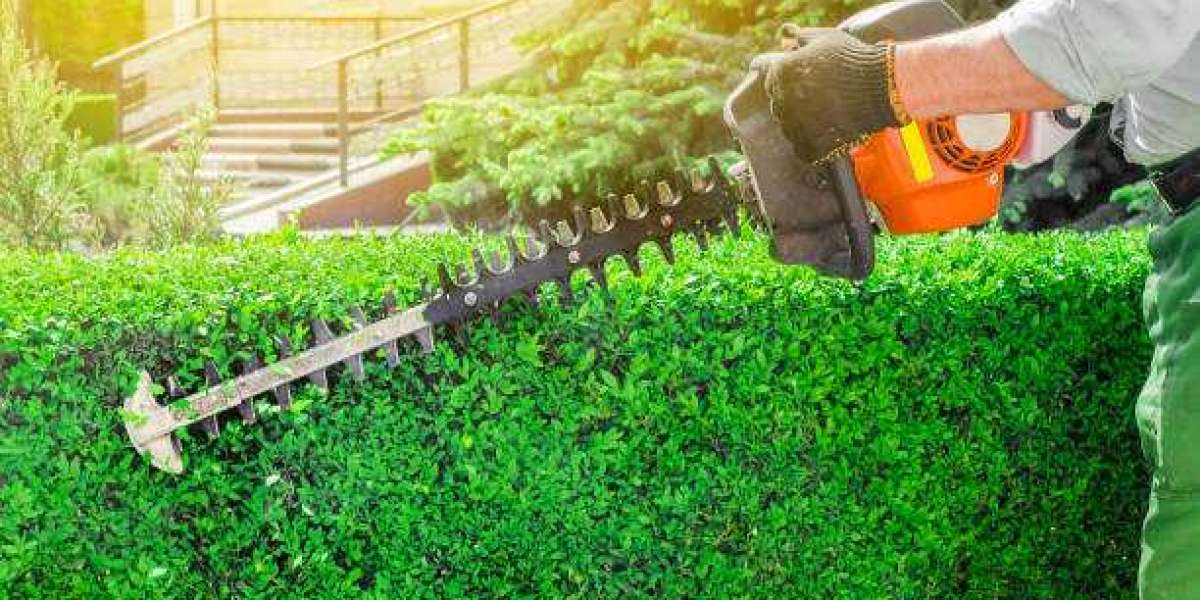Tree trimming is a vital aspect of landscape management that goes beyond aesthetic appeal. It improves the health of your trees, enhances safety, and increases the value of your property. Whether you are a homeowner or a property manager, understanding the importance of tree trimming services can transform your outdoor space into a thriving and visually stunning environment.
Why Tree Trimming Matters
Tree trimming is not just about cutting branches; it’s a strategic process that has numerous benefits:
- Enhances Tree Health: By removing dead or diseased branches, tree trimming allows the tree to allocate nutrients to healthier parts.
- Improves Safety: Proper trimming reduces the risk of falling branches, especially during storms or strong winds.
- Boosts Aesthetic Appeal: A well-maintained tree enhances the overall appearance of your landscape.
- Promotes Sunlight Penetration: Trimming allows sunlight to reach the lower parts of the tree and surrounding plants, fostering growth.
Benefits of Regular Tree Trimming
1. Healthier Trees
Pruning dead or infected branches prevents the spread of diseases and pests. It also reduces the weight on the tree, minimizing stress on its structure.
2. Safety for Your Property
Overgrown branches can pose a danger to your home, vehicles, and even people. Regular trimming ensures your property remains safe.
3. Enhanced Curb Appeal
Neatly trimmed trees improve the overall look of your property, making it more inviting and attractive to visitors or potential buyers.
4. Increased Lifespan of Trees
Well-maintained trees can live longer, providing years of shade, beauty, and ecological benefits.
Understanding Tree Trimming Techniques
There are several techniques used in tree trimming to achieve different results. Here’s a closer look at the most common methods:
1. Crown Thinning
- Involves removing smaller branches to reduce the density of the tree.
- Improves air circulation and allows more light to penetrate through the canopy.
2. Crown Raising
- Removes lower branches to clear space for pedestrians, vehicles, or views.
- Commonly used in urban areas for safety and accessibility.
3. Crown Reduction
- Reduces the size of a tree’s crown by cutting back larger branches.
- Often used when trees grow too close to structures or utility lines.
4. Deadwooding
- Focuses on removing dead or dying branches.
- Essential for the safety and health of the tree.
Tools Needed for Tree Trimming
Having the right tools is essential for effective tree trimming:
- Hand Pruners: For cutting small branches and twigs.
- Loppers: Ideal for medium-sized branches.
- Pruning Saw: Best for larger branches that require more effort.
- Pole Pruner: Used to reach higher branches safely.
- Chainsaw: Necessary for heavy-duty trimming tasks.
- Protective Gear: Safety goggles, gloves, and a helmet protect you from debris.
Steps to Transform Your Landscape with Tree Trimming
1. Assess Your Trees
Begin by examining your trees for:
- Dead or diseased branches.
- Overgrown areas blocking sunlight or views.
- Branches posing safety risks.
2. Plan Your Trimming
Decide which branches to remove and map out the trimming process. Avoid cutting more than 25% of the tree’s canopy at once, as this can stress the tree.
3. Use Proper Cutting Techniques
- Make cuts just outside the branch collar to promote healing.
- For large branches, use the three-cut method to prevent bark tearing.
4. Clean Up After Trimming
Dispose of trimmed branches and leaves responsibly. Consider using them for mulch or compost to benefit your garden.
Common Mistakes to Avoid
1. Over-Trimming
Removing too much foliage can weaken the tree and leave it vulnerable to diseases and pests.
2. Improper Cuts
Cutting too close to the trunk or leaving long stubs can hinder the tree’s healing process.
3. Ignoring Safety Measures
Always use protective gear and avoid working near power lines or at dangerous heights without proper equipment.
4. Trimming at the Wrong Time
Prune at the right time of year based on the type of tree. For most species, late winter or early spring is ideal.
When to Call Professional Tree Trimming Services
While some tree trimming tasks can be handled on your own, there are situations where hiring professional tree trimming services is the best option:
- Large Trees: Managing tall trees requires specialized equipment and expertise.
- Close Proximity to Power Lines: Professionals ensure safety when trimming near utility lines.
- Storm-Damaged Trees: Arborists can assess and safely remove hazardous branches.
- Extensive Overgrowth: When the task is too large or complex for DIY efforts.
Choosing the Right Tree Trimming Services
When selecting a professional service, consider the following:
- Experience and Certifications: Look for companies with certified arborists and a proven track record.
- Equipment and Safety Measures: Ensure they use proper tools and follow safety protocols.
- Customer Reviews: Check online reviews or ask for references.
- Insurance Coverage: Confirm that the company is insured to protect against potential liabilities.
Environmental Benefits of Tree Trimming
Tree trimming not only benefits individual trees but also contributes to the environment:
- Improves Air Quality: Healthy trees absorb more carbon dioxide and release oxygen.
- Enhances Soil Stability: Properly maintained trees prevent soil erosion.
- Supports Wildlife: Pruned trees create better habitats for birds and other animals.
Maintaining Your Landscape After Trimming
To keep your landscape looking its best after tree trimming:
- Mulch Regularly: Use organic mulch to retain soil moisture and regulate temperature.
- Water Adequately: Provide sufficient water, especially during dry periods.
- Inspect Trees Frequently: Check for signs of pests, diseases, or structural issues.
The Cost of Tree Trimming Services
The cost of professional tree trimming varies based on several factors:
- Tree Size and Height: Larger trees require more time and specialized equipment.
- Complexity of the Job: Proximity to structures or power lines can increase costs.
- Frequency of Trimming: Regular maintenance is often less expensive than sporadic trimming.
Conclusion
Tree trimming is a transformative practice that enhances the health, safety, and beauty of your landscape. While basic tasks can be managed independently, professional tree trimming services ensure optimal results, particularly for large or complex jobs. By incorporating regular trimming into your landscape maintenance routine, you can enjoy a vibrant, safe, and visually appealing outdoor space.














